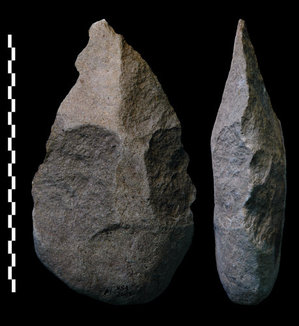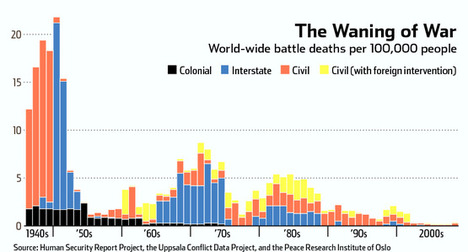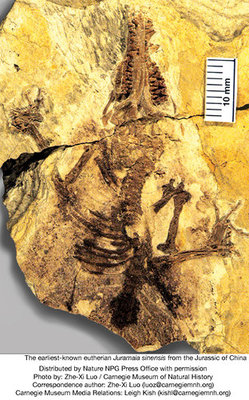(p. A6) Gassy dinosaurs may have spewed so much methane into the air that it could have helped warm the climate tens of millions of years ago, when temperatures were much higher than today, a team of U.K. scientists reported Monday.
The stomach gas released each year by a group of long-necked, plant-eating dinosaurs, which included the world’s largest known land animals, may have equaled the total amount of methane produced every year today from all natural, agricultural and industrial sources, the researchers said Monday in the journal Current Biology. Methane, a greenhouse gas, is 23 times as effective at trapping heat in the atmosphere as carbon dioxide.
The new scientific work highlights the importance of wildlife, livestock and other natural sources of greenhouse-gas emissions in shaping the global climate.
As with cows, sheep and buffalo today, these plant-eating dinosaurs, known as sauropods, likely digested their leafy greens with the help of methane-producing microbes in their stomachs that fermented the plant matter after it was chewed and swallowed. Generally, other plant eaters and creatures that eat meat, including people, don’t digest their food this way and pass gas that is mostly nitrogen and carbon dioxide, with traces of methane and hydrogen.
Cattle belching and gas account for about 20% of U.S. methane emissions, according to the Environmental Protection Agency.
For the full story, see:
ROBERT LEE HOTZ. “Dinosaur Gas Emissions May Have Warmed Air.” The Wall Street Journal (Tues., May 8, 2012): A6.
(Note: online version of the story is dated May 7, 2012.)
The academic article on sauropod methane emissions is:
Wilkinson, David M., Euan G. Nisbet, and Graeme D. Ruxton. “Could Methane Produced by Sauropod Dinosaurs Have Helped Drive Mesozoic Climate Warmth?” Current Biology 22, no. 9 (May 8, 2012): R292-R93.








